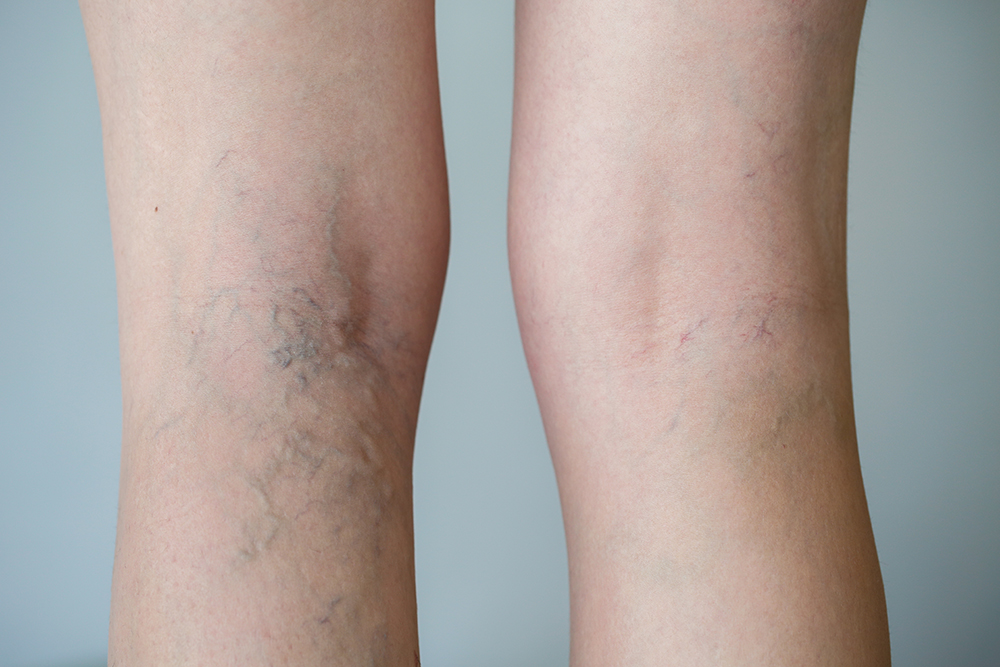Varicose veins are described as large, raised, swollen blood vessels that develop in the legs and can be seen through the skin. They can twist and turn up and down the legs, and are unsightly and embarrassing. According to www.webmd.com, spider veins are smaller red, purple, and blue vessels that also twist and turn. Spider veins are also visible through the skin, and are typically found on the face, as well as on the legs. The main differences between the two are the size and visibility of the veins, and the fact that spider veins can also be found on the face.
Both women and men can develop varicose and spider veins, but they’re prevalent in women. Heredity, obesity, hormonal influences, and a history of blood clots can play a part in the appearance and severity of these veins. Occupations that involve long periods of standing, such as nursing, hairstyling, and teaching, can have an impact, according to the website. Other reported causes can include the use of birth control pills, postmenopausal hormone replacement, and trauma or injury to the skin. Facial spider veins can be caused by environmental damage, such as excessive exposure to sun or extreme cold.
Treatments are available for varicose and spider veins. The conservative approaches involve the use of compression stockings, or even support hose for minor cases, and basic lifestyle changes. Taking care of your skin (sunblock, moisturizer, and avoiding extreme weather conditions), losing weight if needed, and regular exercise can help treat or avoid varicose and spider veins.
If these changes aren’t enough, sclerotherapy is a procedure that involves an injection of a liquid chemical into the vein to cause it to disappear gradually. It is a simple, relatively inexpensive option and can be done on an outpatient basis. Laser and pulsed light therapy, radiofrequency treatments, and surgery are other options.

